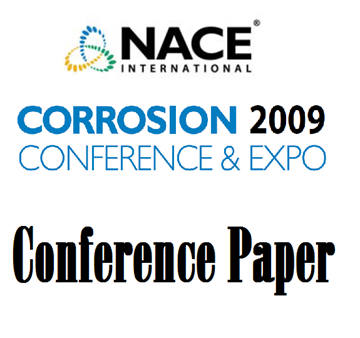~~Keywords:Remote monitoring data-logging CP cathodic protection measurement DC voltage AC voltage pipelines isolation flange diode decoupling deviceAbstract:It is a common practice to install DC decoupling devices at pipeline joints where isolation flanges are installed. The decoupling device protects the isolation gasket from damage including the possibility of fire resulting from surges caused by AC ground faults. Historically it has been less common to verify the operation of the decoupling devices deployed at isolation flange locations. This has likely been due to several factors. First decoupling devices are very reliable and the failure rate even in extreme conditions is very low. This fact creates a perception that once installed little or no attention is necessary. Second the locations at which these devices are installed are not sites where regular tasks such as rectifier maintenance occur so it is easy to overlook inspecting these devices on a regular basis. Third and most important in regards to this paper there is a perception that periodic readings from these devices in order to ensure operational integrity are not required. Decoupling devices are essentially diodes and as such are subject to be checked every two months for operational integrity in order to be in compliance with PHMSA guidelines.The use of isolation flanges is widespread. Isolating cathodic protection at the upstream and downstream mainline junctions at stations isolatingprotection at city gates and isolating cathodic protection at custody transfer points for natural gas operated power stations are just a few of the common applications for cathodic protection isolation. Any of these locations where decoupling devices are deployed are subject to operational integrity verification every two months.Remote monitoring devices are an ideal solution to the inadvertent neglect that can occur pertaining to the periodic evaluation of decoupling devices. Currently available monitoring systems have the capability to measure the AC passing through the decoupling device as well as changes in DC pipe to soil potentials AC voltage potentials and AC and DC current densities. This technology provides periodic measurements of all monitored parameters with scheduled reports back to the specialist for use in compliance reporting. Alarm thresholds can be assigned on each monitored parameter thereby providing immediate notification of equipment malfunction or failure. Additionally all data measurements can be logged in local memory storage for retrieval of detail data in the event of an extended alarm condition. This technology provides the cathodic protection specialist with all the information necessary to immediately assess the integrity of the decoupling system as well as monitoring for unrelated anomalous conditions at the site.This paper is a case study of multiple sites employing the use of monitoring equipment for the purpose of evaluating the operational integrity of decoupling devices at isolation flanges. Methods best practices and challenges will be addressed providing the necessary information to successfully implement this solution at similar locations.




